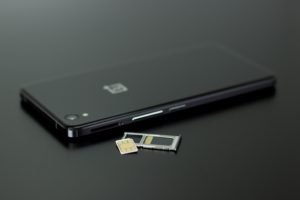
Our mobile devices are constantly receiving and making phone calls all day long, and for some of us, all hours of the night. Don’t even get me started on text messages. What gives your smartphone the ability to handle all of this? One tiny chip on a piece of plastic, commonly referred to as the SIM card. I’m sure you have heard of it and have probably even removed and inserted one into your phone before. Aside from taking it out of or popping it into your device, the SIM card has its own processes that give your smartphone the capabilities it needs to…well…actually function as a phone. In this article we will take a deeper look at how your SIM card works.
What is a SIM Card?
SIM stands for Subscriber Identity Module. The name alone should provide some insight into what it does. A SIM card is a small integrated circuit with a limited storage capacity used to connect your phone to the mobile network. It does so by storing the subscriber’s information. However, it does not store photos, videos and other types of data and media, so back it up! If you were to remove your SIM card and put it in another device on the same network, the new device would be recognized and available to make and receive phone calls using your old number. Picture getting out of your car, taking your driver’s license and registration with you and switching your license plate over to the new vehicle. That is essentially what you are doing when you transfer your SIM card to a new device.
Smaller and Smaller Sim Cards
Have you ever tried to transfer your SIM card to a new device and found that it doesn’t fit? That is because over the years they have decreased in size. The first SIM card was made in 1991 and they have gradually gotten smaller ever since. The original full-sized SIMs were followed by the smaller mini-SIMs. After the mini-SIMs came the micro-SIMs. After the micro-SIMs, we arrived at the even smaller nano-SIMs. Although, micro-SIMs are still relatively common, a majority of the modern smartphones utilize nano-SIMs. So what do you do if you run into a scenario where you need to transfer your SIM to a device that isn’t compatible due to the difference in size? There are adapters available that allow the newer and smaller SIMs to fit in older devices by increasing their size using a plastic frame. If you want to put an older and larger SIM into a newer phone you might have to order a new sim from your carrier, or you are going to have to cut your current SIM down in size (risky strategy!).
Connecting to the Network
After you insert the SIM card into your phone and power on your device the real magic starts to happen. There is a 64-bit (8-byte) unique identifier number and an authentication key stored on the SIM card. These two numbers are passed to the service provider. The provider generates a random number and a response number and sends it back to the phone. Another response number is then generated and if the numbers match up your phone will be connected to the network. This whole process mainly applies to the GSM network, which stands for Global System for Mobile. The other type of network is CDMA (Code-Division Multiple Access) and devices on this network are often locked to a specific carrier. Until recently, devices on the CDMA network did not use the SIM card technology. The SIM card technology was implemented mainly to provide network capabilities with the 4G LTE standard and these devices might still be locked to a carrier. Overall, GSM allows you to easily transfer your device between carriers, while CDMA might be a little more difficult.
Don’t Forget About the Little Guy
SIM cards are often overlooked and sometimes thought of as insignificant but they are actually the opposite. These tiny chips are critical components that allow your smartphone to carry out it’s primary tasks of communicating with the rest of the world. Without them, we wouldn’t be able to connect to the network, text or make phone calls. So, the next time you pop that little chip out of your device make sure you show it some appreciation!
If you have any questions regarding your device or about any information covered in this article feel free to reach out to us! You can reach us at (919) 263-2699 or schedule an appointment! If you have friends that need a repair you can sign up for our referral program. Earn $5 every time you refer a friend to TCR. They’ll get $5 off their repair, too!
